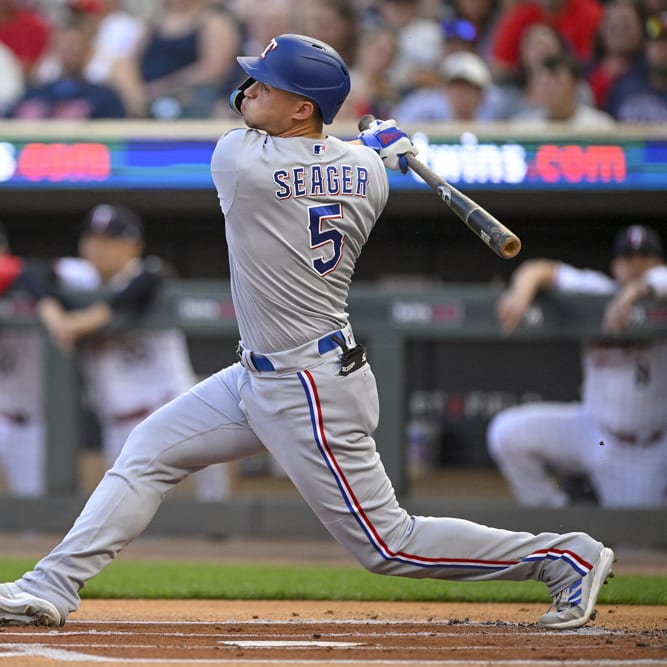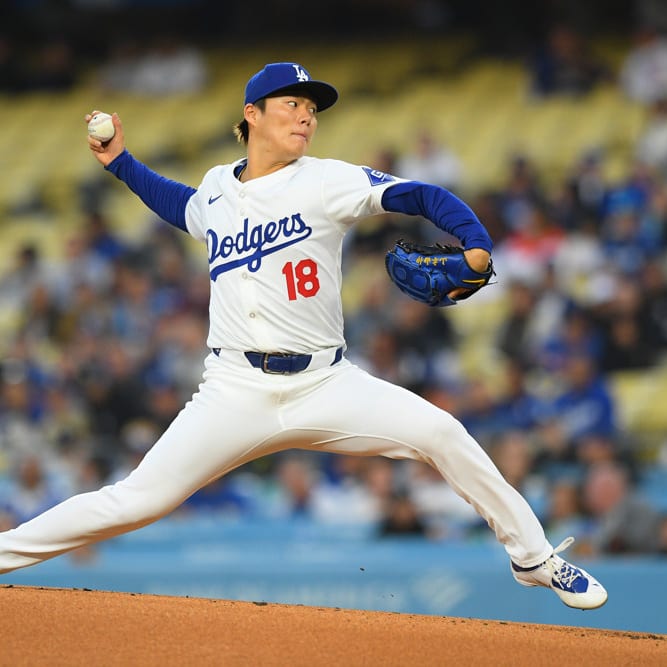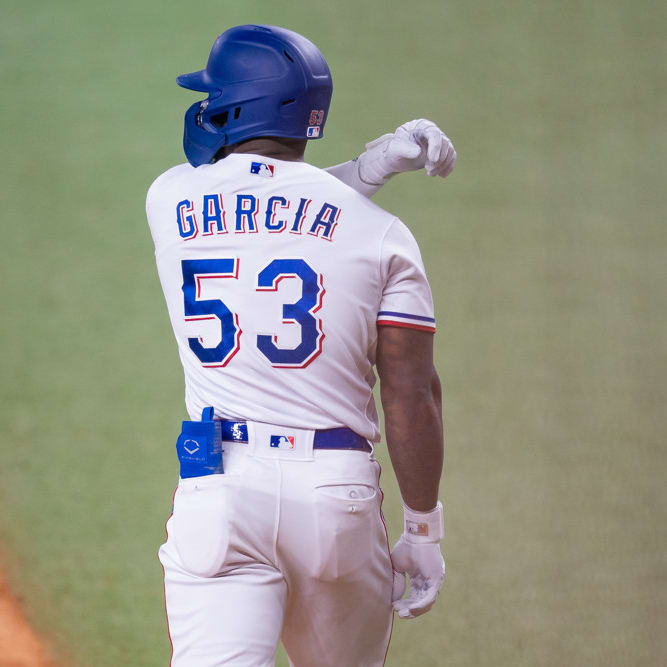This article is part of our Mound Musings series.
The season is winding down – there are less than five weeks left. This week I thought would be a great time to discuss one of the most difficult things to predict in fantasy baseball. When rosters expand, teams will often take a look at their developing young arms, a measuring stick, if you will, for next year. For fantasy owners, there will be pitchers coming up who could help down the stretch, and they can also get some ideas to keep in mind next spring. The tough part is determining who's going to help now, and what to expect on the positive side next year. And, interestingly, the same pitcher might not fit snuggly into both categories. That said, let's get to it:
The New Kids on the Block – I'll begin with a little graphic that I believe illustrates the first few outings for most major league starting pitchers when they might be ripe for the picking. Take a look, and then we'll talk about what it shows.

We'll compare and contrast two pitchers arriving to the big leagues in early September.
Pitcher A is a middling prospect with average (or even slightly above average) stuff and respectable peripherals in Triple-A this season. He has two relatively useful offerings – a fastball and a slider – but his changeup and curve are still pretty inconsistent. He does have a rather deceptive, "over-the-top" motion, but his command also is spotty at times. He got off to a great start
The season is winding down – there are less than five weeks left. This week I thought would be a great time to discuss one of the most difficult things to predict in fantasy baseball. When rosters expand, teams will often take a look at their developing young arms, a measuring stick, if you will, for next year. For fantasy owners, there will be pitchers coming up who could help down the stretch, and they can also get some ideas to keep in mind next spring. The tough part is determining who's going to help now, and what to expect on the positive side next year. And, interestingly, the same pitcher might not fit snuggly into both categories. That said, let's get to it:
The New Kids on the Block – I'll begin with a little graphic that I believe illustrates the first few outings for most major league starting pitchers when they might be ripe for the picking. Take a look, and then we'll talk about what it shows.

We'll compare and contrast two pitchers arriving to the big leagues in early September.
Pitcher A is a middling prospect with average (or even slightly above average) stuff and respectable peripherals in Triple-A this season. He has two relatively useful offerings – a fastball and a slider – but his changeup and curve are still pretty inconsistent. He does have a rather deceptive, "over-the-top" motion, but his command also is spotty at times. He got off to a great start when he moved up to the highest level of the minors to begin the season, but his numbers have softened somewhat as the season wore on.
Pitcher B is a highly regarded prospect with an exceptional pedigree. He has a blazing fastball with arm side run, and his curve can be knee-buckling, but he also lacks a consistent third or fourth pitch, and he can have trouble throwing that nasty curve for strikes. He dominated on High-A ball early in the year, moved up to Double-A at midseason, before graduating to Triple-A a little over a month ago. He fared petty well, but displayed an elevated walk rate and served up a few home runs recently.
As you probably know, pitching is a series of adjustments. The pitcher has an advantage early on, in most cases, as the hitters lack familiarity with the repertoire. In the graphic (on the left), you will notice that both pitchers enjoy some success. However, after a handful of starts, the results start to suffer. The hitters are learning. Ongoing success depends greatly on the pitcher being able to adjust to those hitter adjustments, and the whole process repeats. If the pitcher can't adjust, he typically fades into oblivion – at least until he is more seasoned and better prepared.
How many times have you seen a pitcher roll through a few starts, and immediately after you grab him, the wheels seemingly come off and he is annihilated in his next few outings? Or, in our case study here, you go to the wall at next spring's draft to grab the hottest commodity at the table – the infamous "buzz" guy – only to watch him get battered during late April before a trip back to the minors in mid-May. The pitchers likely moved along the timeline in the graphic.
Hitters probably struggled initially with picking up Pitcher A's deceptive motion, but as they became more familiar with what to look for, his mediocre stuff with inconsistent secondary pitchers turned into batting practice, and he rarely posted a good start after that. Pitcher B, with his superior fastball, and a scary, albeit on and off, curve fared a bit better for longer. In fact, he helped some fantasy owners capture a league title by throwing five of six quality starts in the late season. He had just enough time. Unfortunately, after a lot of hot-stove hype, the magic fades. In 2018, hitters realize they can ignore that inconsistent curveball, he falls behind in counts, and the batters often feast on a "get me over" fastball that catches too much of the plate. Be patient, he'll be back, and when it all clicks, he'll be a big asset.
Some indicators of likely success (or failure) this September and in 2018 – Next, we'll pull things together and hopefully build a predictive model to determine which September call-ups are most likely to succeed, not only now, but next year, too.
High-ceiling pitchers with good command and three (or more) quality pitches – Rather obviously the best bets for success now and later. Unfortunately, not a lot of September call-ups qualify under all of these conditions. If they did, they are probably already up.
Lower-ceiling pitchers with a very deceptive motion and decent command, but a limited repertoire – deception is the key here. When a pitcher features a deceptive delivery, hitters often struggle against them at first. But, it rarely lasts. They might do very well when they first come up – hopefully throughout the month – but they are extremely risky plays for next season when batters will become more familiar with that deceptive motion.
Moderate and even high-ceiling pitchers with inconsistent command of more than one or two pitches – In almost every scenario, starting pitchers will eventually live or die with their command of the strike zone. The higher the upside, the more likely they are to succeed, at least for a while, but hitters will begin to lay off secondary pitches and focus primarily on their fastball. That is not a formula for success. The high-ceiling guys still warrant monitoring, as they could become long term success stories if/when they develop more consistency, but there is considerable risk until that happens.
Some Notable Rotation Ramblings:
- I'm anxiously awaiting the return to Pittsburgh of Tyler Glasnow. He was awful earlier in the year, but his results at Triple-A Indianapolis suggest the light may have come on. Don't overlook him if he gets some September starts. He remains a blue-chip arm, with a huge ceiling if/when he gets everything together.
- In the category of getting healthy, take note of Tampa Bay's Alex Cobb. He was slogging along through the first few months while displaying inconsistent command, but since early July, he has been impressive in six of seven starts and is hitting his spots with regularity. He's back to being a solid innings eater.
- Another highly encouraging performance in the second half, the Diamondbacks' Patrick Corbin finally appears to be back in pre-injury form. His overall numbers are still fairly unimpressive, but they don't reflect his more recent innings. He's getting ahead and finishing them off. Move him up on your 2018 draft sheet.
- On Wednesday, the Mariners acquired Mike Leake from St. Louis. Leake has struggled recently, but his last start was better, and a deal suggests he is healthy (that has been a concern for me). This smacks of the, "changes in latitudes" angle, and I have a hunch he could enjoy a productive September.
- They just kept winning with their top two pitchers out, but the Dodgers are set to welcome Clayton Kershaw (Friday) and Alex Wood (Sunday) back to the hill. The team has been so successful, they can afford the luxury of easing them back in to make sure they are fresh, but fully prepared, for the post-season.
- It will be interesting to see if a team might be willing to take on the very heavy contract of Justin Verlander as the race for playoff position intensifies. He has already cleared waivers, and his recent dominance (0.91 WHIP, 2.41 ERA, and 64 strikeouts in his last 56 innings) is surely making the suitors drool.
Endgame Odyssey:
It looks like the Angels are settling into a timeshare for saves. With the team hesitant to use Cam Bedrosian in back-to-back games, and Bud Norris back on the disabled list, Blake Parker has converted a couple of chances when Bedrosian was unavailable. The injured Huston Street might return in mid-September, which could muddle the picture even more. If you're looking for a flyer for saves next year, consider Archie Bradley in Arizona. He has thrived since moving to the pen, and there is no guarantee the team will re-sign 41-year-old Fernando Rodney. In Colorado, Greg Holland has struggled mightily of late, after an eye-popping return from injury earlier this year. Jake McGee is probably the guy who will benefit most from added save chances. The Nationals tried a matchup approach last weekend, having Sean Doolittle in the eighth inning and Brandon Kintzler in the ninth. It was a disaster. Look for them to stick with the much-better option, Doolittle, whenever possible going forward.










